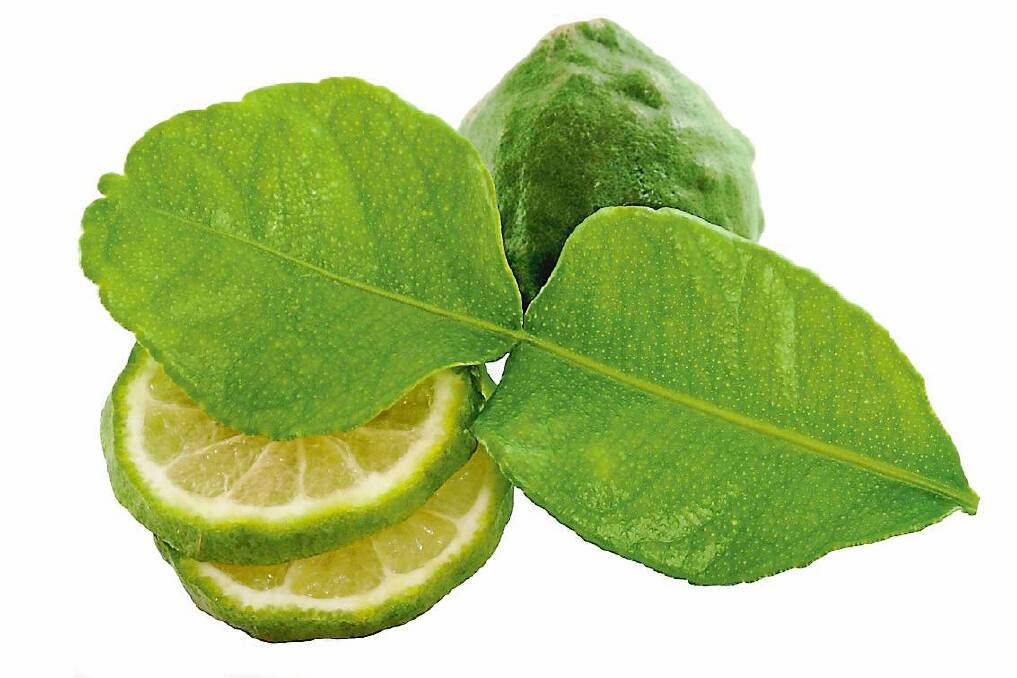I have a cold. Or rather, by the time you read this, I will have had a cold, a nasty gluggy thing that lasts about four days and leaves you snotty and sneezy and longing for hot lime and ginger drinks. A lot of them.
Subscribe now for unlimited access.
$0/
(min cost $0)
or signup to continue reading
Luckily the limes are ripe just in time. Tahitian limes need some cold days or nights to soften, and very cold nights to turn yellow, which is why the peel of those grown in the tropics stays green.

If I was planting a garden again a Tahitian lime is one of the first plants I'd put in. They are excellent in large pots, too, smallish, neat trees loaded with fruit all winter.
They are luscious in lime pie, lime-instead-of -lemon delicious pudding, or used in marinades and salad dressing, in hummus or squeezed onto almost any baked vegetable.
We grow Kaffir limes, too. The fragrant leaves are used in cooking, and the warty fruit is dry but flavorful, but to be honest I've only used our Kaffir lime leaves half a dozen times in the twenty or so years they've been growing. The tree was a gift. I bunged it in, expecting it to die in our -9 degree winters. It thrived instead. But if I want a zing of lime, it's easier to squeeze a Tahitian.
Desert limes and Finger limes grow well here too (think 'vegan caviar', luscious globules that burst with flavor when you crunch them) but they fruit over summer, not winter.
Limes are easy to grow if you give them a bit of care. Feed them every spring, and water the food in well or it may burn the shallow roots. (Never fertliise dry soil). If the older lime leaves are yellow, your tree needs nitrogen. If the leaves are narrow, your tree needs phosphorous- in either case, basically a good feed. But if it's cold and mid-winter when the leaves turn yellow, your tree might just be deciding it'd like a warmer climate.
If you're in a frosty area, grow your limes against a north-facing wall, well protected from cold winds. (If you can't protect your lime tree from cold winds, wait till you have a greenhouse to grow it in.)
You can make your trees a bit more cold hardy by spraying with seaweed spray and giving a sprinkle of potash or wood ash in late summer: potash deficient plants are more prone to frost damage. Don't mulch around lime trees in cold areas in winter, as mulch will increase frost damage to the leaves.
But do mulch your lime trees in spring. Limes are shallow rooted and will wily or even die on you extremely quickly when it's hot and dry. Don't mulch next to the trunk, or you may cause it to rot, but do mulch just a little beyond the 'drip line' - where drips fall from the outermost leaves - to encourage roots to spread. And of course, water. Some plants wilt then perk up again weeks or months later. If your lime tree wilts it is a warning: give me a drink or I may die.
Limes can get stink bugs- the clue is in the name. Put on solid boots, knock them off with a tomato stake or rake, then stomp on them. The smell of stomped bug will repel other bugs. The bugs are also attracted by the scent of rotting fruit, so pick up any windfalls.
Scale can be a problem in hot, dry areas - small scale-like pests on new shoots and under leaves. Spray Pestoil, or a similar oil spray, on top and under leaves to suffocate rather than poison.
And pick the limes as they ripen, at least twice a week. You should still be picking them well into spring, and hopefully, well beyond gluggy cold season.
This is the week to:
- Dry mint or lemon grass for winter herbal teas. (Add fresh ginger for extra zing when you make a pot of either.)
- Fill a couple of hanging baskets with winter bloomers or even perennial chili plants if you have a frost free sunny patio and want branches of bright red fruit; or
- Try a winter herb basket to replace summer's basil: parsley, thyme, prostrate rosemary, winter savory, sage, or garlic chives
- Pick the persimmons before the birds get them, and enjoy watching the leaves turn vivid orange. Persimmon are possibly the most stunning autumn tree in the world.
- Trim back fuchsia, pelargoniums, lavender, hibiscus, Federation daisies, hydrangeas, then plant the cuttings.
- Plant masses of pansies, primulas, violas, wallflowers for colour all winter. (I won't be doing any of these, just sipping my lime juice, ginger and hot water.)

